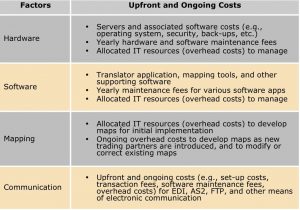I’ve been researching the Transportation Management Systems (TMS) market for over 16 years, and a few years ago I noticed a trend: early adopters replacing their TMS solutions. It started with companies looking to replace their old client-server applications (based on outdated architectures) with more modern, web-based solutions that were easier to scale and integrate. In other cases, companies were looking to replace multiple point solutions from various vendors (i.e., separate applications for truckload, LTL, parcel, and fleet operations) with a single, more integrated solution.
Today, the replacement cycle continues, but the main drivers are different. A growing number of companies are replacing their TMS to improve total cost of ownership and usability.
This is particularly true for third-party logistics providers that are looking to onboard new clients (and their carriers and trading partners) much faster and less expensively than their current TMS applications allow. To paraphrase a 3PL executive I spoke with recently, “We can’t afford to spend months and tie up many IT resources every time we onboard a new client.” The same issue arises when 3PLs have to respond to changes in client processes or networks, which happens often. The ability to quickly and easily configure a TMS on an ongoing basis — without having to hire high-priced external consultants — is a top selection criterion for 3PLs today.
For shippers, many of them are starting to recognize that connecting with carriers and other trading partners (via EDI, FTP, AS2, web portals, and other means) is not only a labor-intensive and time-consuming part of the implementation process, it is also a continuous process, with ongoing costs and IT resource requirements.

How long does it take you to onboard a new carrier or trading partner, and how much does it cost? How often do you have to onboard or deactivate trading partners? How often do you have to modify data maps, and how much time does it take, and at what cost? Those are just some of the questions logistics executives need to address when assessing their TMS requirements.
For most manufacturers and retailers, network connectivity, particularly in transportation, is not a core competency. That is why software-as-a-service TMS solutions, which come with a built-in network of carriers and trading partners, continue to gain traction in the industry.
Regarding usability, shippers and 3PLs are looking for TMS applications that are easier to learn and use. As I wrote in a post last year, many user interfaces are crammed with too many features and too much information that users don’t need or want to accomplish their tasks; have non-intuitive workflows that don’t align with the way users are accustomed to working (or the way they want to work); or force users to open multiple windows and tabs, and click countless times, to accomplish what should be a straightforward task.
Simply put, usability matters more than ever today, as companies look to improve productivity and reduce training costs and time. For more on this topic, tune in to Talking Logistics on September 30th as I discuss the importance of TMS user interfaces with Nicholas Carretta, President at UltraShipTMS.
As I highlighted last year in 4 Questions Before Investing in a Transportation Management Solution, there are many factors companies must consider when evaluating their TMS options. Software features and functions get you to a short list, but it’s factors like total cost of ownership and usability that are more strongly influencing the selection process today.
Are you looking to replace your TMS, or have already replaced it? Take the quick poll below and tell us why.
[yop_poll id=”11″]










